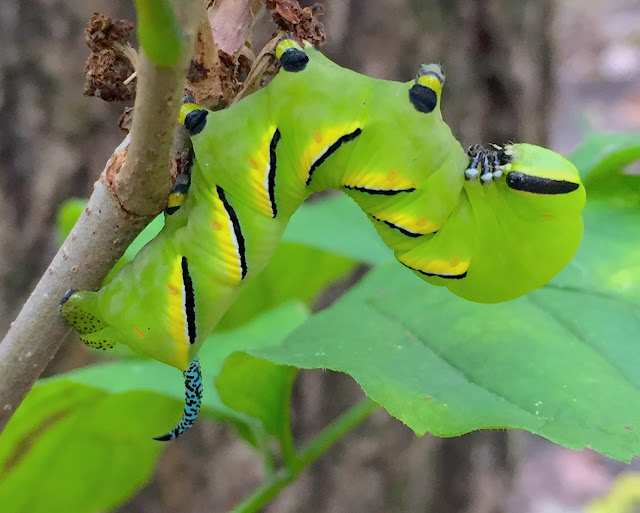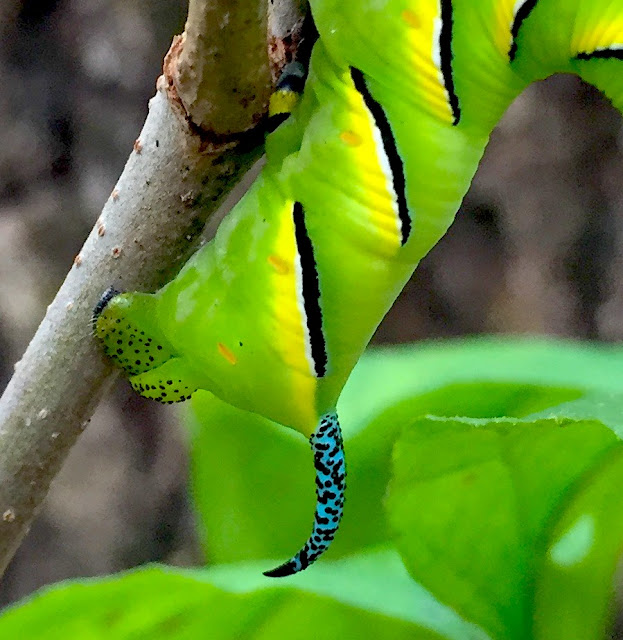Now - the prep begins.
On October 4, we chose the spot, marked the buckthorn trees that will support the pile with double red ribbons, cut two invasive basswood logs for the base, and cleared enough brush to start work on Saturday's workday.
 |
| Russ, Estelle, John, and Eriko clear around the trees that will brace the pile. |
At 9:00 AM Saturday morning we planned to divide our forces in two. Our "top focus" this time of year is gathering rare seed. But a few of us would haul the base logs and start the pile.
Turnout is unpredictable - sometimes five or ten people - sometimes forty or fifty. But this day barely enough people showed up to carry those big logs, so the hunter-gatherers agreed to help with the big lug before their seed work.
Then at 3 minutes past 9:00, a miracle. Forest Preserve resource manager Steve Ochab showed up with young muscle in the form of Danny, Brandon, Aaron, and Steve 2 (Smith).
 |
| The two big logs at the base allow us to build a raised platform for the brush pile, which makes it easy for any animal hiding in the pile to escape when the fire is lit. |
 |
| A brush-cutter allowed us to quickly dispense with dense young buckthorns - and add a lot of "flash fuels" to the pile. |
 |
| In just three hours, the dense pile was tall enough that we needed a ladder and people on the top to haul up more fuel. |
We'll continue to build that tower of brush over next few Somme Woods workdays (except the pure seed-picking ones). Next example, October 19 at 9:00 AM, we'll put that ladder back up and continue skyward. You're invited to help. There's a lot of buckthorn to cut.
As we worked, we heard and saw interesting birds, learned a few special plants. As we gathered up our tools, with some good feelings for a morning well spent, at the edge of a previous year's restored area, someone spied this treasure:
So gorgeous it seemed to glow - and yet almost invisible until you noticed it. This is the caterpillar of a hawk moth or hummingbird moth: Sphinx kalmiae. It was another reminder of the rich nature that had been being lost, but thrives once more after restoration. And what's with that blue and black tail-ish thing?
The caterpillars of this group of fast-flying moths are also called "hornworms" because of their scary-looking "stingers." They don't sting though; it's an impressive bluff. But why not leave them alone anyway. Hawk moths pollinate a lot of plants, like the prairie white-fringed orchid. They're part of the diversity that makes the world richer.
Hey, enjoy nature. Enjoy the forest preserves. And save the date.

